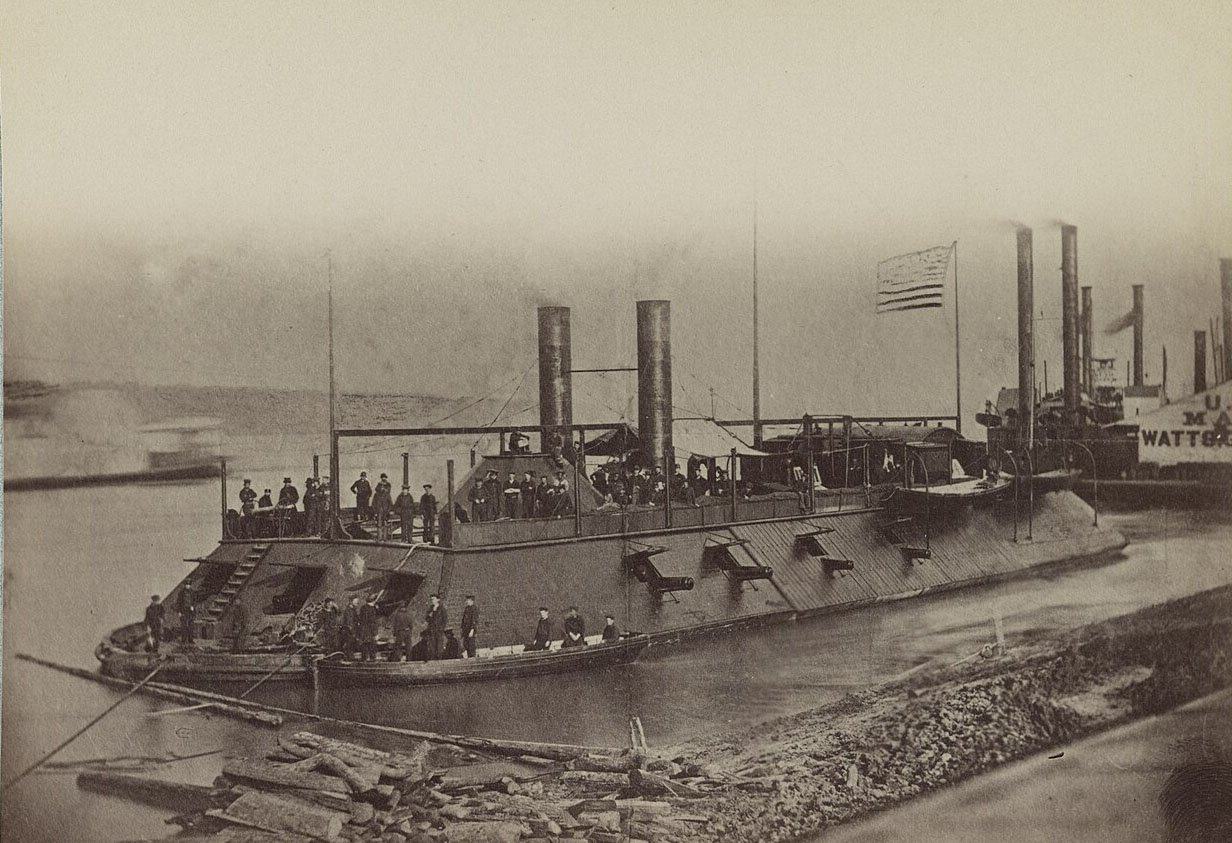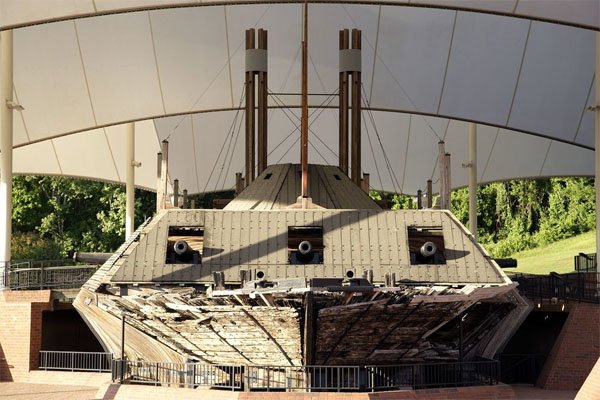Historic U.S. Civil War Ship Decaying Due to Fungal Invasion
The long-term preservation of a historic gunboat that participated in the American Civil War is coming under serious threats owing to continuous degradation due to invasion by microorganisms, specifically fungi. Following a detailed study on the remains of USS Cairo, which is on display and is being preserved at the Vicksburg National Military Park, it has emerged that despite having a canopy cover and wood preservation treatments applied to the ship, Cairo is slowly decaying due to being exposed to environmental elements.
Built in 1861, Cairo was the lead ship of seven shallow-draft City Class river ironclads, steam-powered gunboats that were designed to help Union forces overcome Confederate opposition during the American Civil War. Launched in January 1862, the 13-gun boat had a short career with limited action in battles at Plum Point, Tennessee (also known as the battle of Fort Pillow) in May 1862, and Memphis, Tennessee in June 1862.because in December of the same year, it was sunk by an electronically detonated torpedo in the Yazoo River approximately seven miles north of Vicksburg, Mississippi. Cairo was the first ship ever to be sunk by a mine remotely detonated by hand.

Cairo in 1862 --- US Navy/Library of Congress
The boat remained in the Yazoo River until 1964, when it was salvaged. In 1972, Congress enacted legislation authorizing the National Park Service to accept title to the Cairo and reassemble the remnants for display and preservation. In 1977, Cairo was returned to the park and partially reconstructed on a concrete foundation near the Vicksburg National Cemetery.
Microbial degradation studies by a team of University of Minnesota researchers now believe that exposure to environmental elements is threatening the boat’s long-term preservation. The studies evaluated the types of decay present, revealed the elemental chemistry of the woods, and identified a large diverse population of fungi that were isolated from the ship timbers.
In their findings, published in the Journal of Fungi, the team found advanced stages of decay in many areas of the ship and also established that while some past wood preservation treatments were applied to the wood, fungi tolerant of the protective treatments colonized over time. The team also identified a diverse group of soft rot and white rot fungi after isolating wood obtained throughout the ship. Many of the fungi found appear tolerant of compounds used to treat wood for preservation.

(National Parks Service)
“Continued degradation of this historic Civil War ship is causing serious concerns for its long-term preservation. To determine the appropriate conservation efforts, it is essential to understand the current condition of the wood and the microorganisms causing the degradation,” said Robert Blanchette, lead author of the study.
In order to control the tough fungi, the researchers reckon that it is necessary to control the environment by reducing moisture and exposure to elements. They recommend a new enclosed structure for the ship with environmental control, an intervention that is necessary to halt the deterioration caused by both the preservative tolerant wood degrading fungi and the ship’s outdoor exposure.
The researchers intend to further study the organisms to better understand their interactions with wood and how to control them, something they highlight is critical in helping protect and preserve important cultural artifacts.
Content Original Link:
" target="_blank">





















































